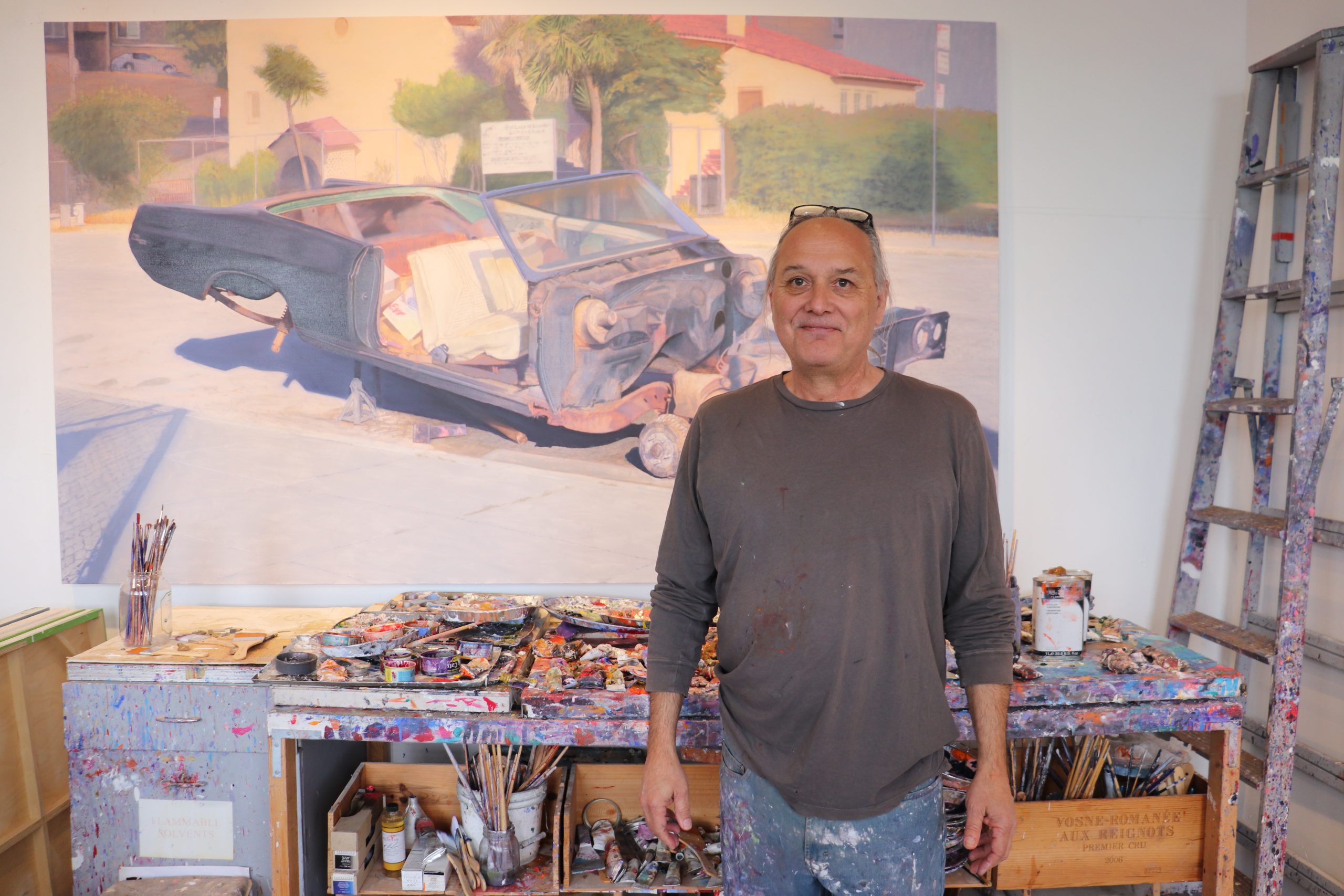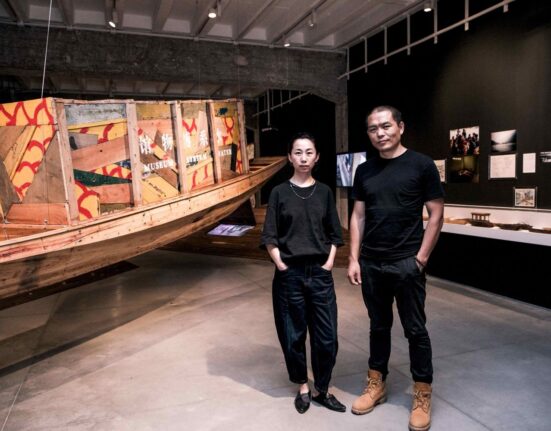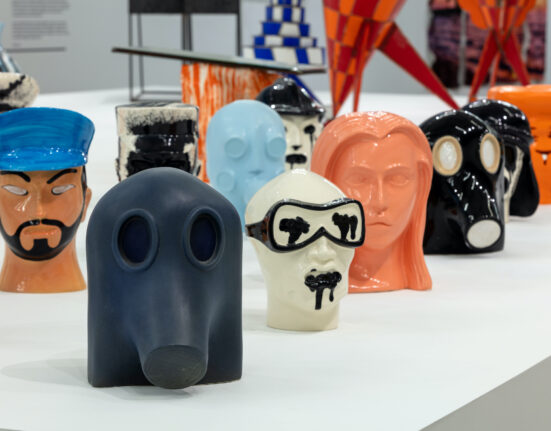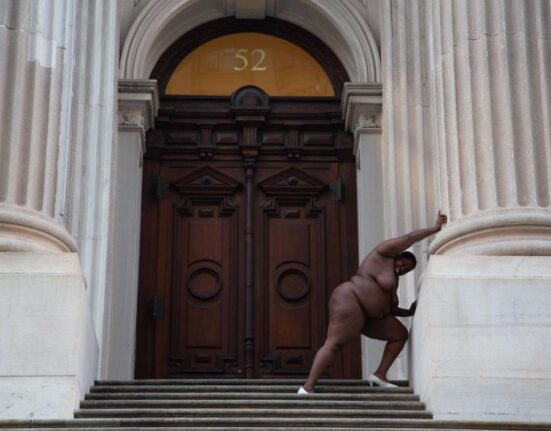Beneath the towering condos overlooking the shipyard at Hunters Point are the last remaining former navy buildings — home to one of the largest arts communities in the country.
These complexes, studios to over 300 artists for 41 years, have leaky roofs and an uncertain degree of radioactive exposure — the navy spewed toxic waste into the bay, impacting the nearly 111,000 people who live in its vicinity. But with rent at about a dollar per square foot, no one has any intention of leaving.
In fact, there’s a waitlist.
“It’s been crazy,” said Randy Beckelheimer, an oil painter at Hunters Point Shipyard Artists. “We don’t have running water, heat, but you can’t beat the price … if I had the option, I would stay as long as I can.”
Shifting towards one of his many windows, letting streams of light into his studio, he pointed in the direction of the shipyard. “And just look at that view.”

Last Sunday, the complex bustled with dozens of arts enthusiasts wandering through its halls–– eating gumbo and listening to jazz. Potential customers gazed at — and sometimes bought — sculptures, metal work, paintings, and more as the artists continued working away at an unfinished canvas, or chatted with curious visitors.

“Is that supposed to be Alaska?” asked one young man nodding towards a five foot landscape of snow-peaked mountains, as he wandered into Carol Banfield’s studio, strumming a ukulele.
“Yes, actually,” said Banfield, half-surprised. “Fantasy Alaska,” she said, pointing to a microscopic unicorn at the bottom left corner of the frame.
Artists hosted guests in their studios like they were entering their living room, ready with wine, snacks, and even a fully-serviced coffee station.

“It’s exciting,” said Beckelheimer, fielding questions from all corners of the room. “We have people of all ages coming through the doors, young art students, older folks –– you never see this many people.”
Becelheimer stood in front of his life-like, large-scale paintings of scenes of Hunters Point, many of which look just like the view out his window: lonely, abandoned buildings and large cranes casting shadows over the bay.

Beckelheimer has worked in this very studio for nearly 30 years, and doesn’t have any plans to leave any time soon. He needs the space for how large his paintings are, and to be inspired by the environment around him. Many times, the artists have been told to leave by the Navy due to the ongoing toxic cleanup.

Even when the electricity was temporarily shut off in 2007, and everyone was told to go home, Beckelheimer snuck back in and worked by candlelight.
He has been fascinated by the shipyard for decades, and began by walking through the derelict ruins, taking documentary-style photos of what he found. Then, he started turning them into paintings.
When asked if he worries about how years of working in a radioactive waste site might have affected his health, Beckelheimer said, “I’ll have to wait and see.”

Hunters Point residents exposed to toxic and radioactive waste left over from the Cold War have suffered from a statistically higher rate of cancer, birth defects, and other illnesses, some of which have developed years later. During a cleanup in 2008, Beckelheimer says, contractors found radioluminescent materials in the buildings’ sewer pipes. They were filled with concrete, and artists lost access to water.
In 2007, metal artists were evicted from their building by the U.S. Navy so they could clean the toxic soil. Today, it stands empty, but it is scheduled for demolition this year. Since then, around 40 artists have operated two miles away from the rest of the artist community, at a second location at Islais Creek. There, welders have their own territory on the first floor.

Like the shipyard, the building has lived many lives. Rick Bulan, an artist who transforms sunset orange metal sourced from the Golden Gate Bridge into furniture, sculptures, and jewelry, says the space has been used for everything from film studios, to auto repair, to an underground rave, pointing to leftover marks on the ground from its time as a film studio.
FivePoint, the developer of Hunters Point Shipyard, plans to add a new building to the complex to reunite artists at Islais Creek with the rest of the Hunters Point Shipyard community, but it has seen some setbacks. Specifically, ongoing toxic cleanups, and falsified soil samples, paused all development.

For now — as it has been for decades — the status of many of the buildings at Hunters Point is in question. “We could be told to leave any day,” said Beckelheimer, either due to encroaching development, further soil testing, or the eventual demolition of the navy barracks.
Still, artists say they will hold on for as long as possible, and to some onlookers, their life working and creating art in the former navy buildings is idyllic.
“I would quit my job and work here in a second,” said one visitor.







